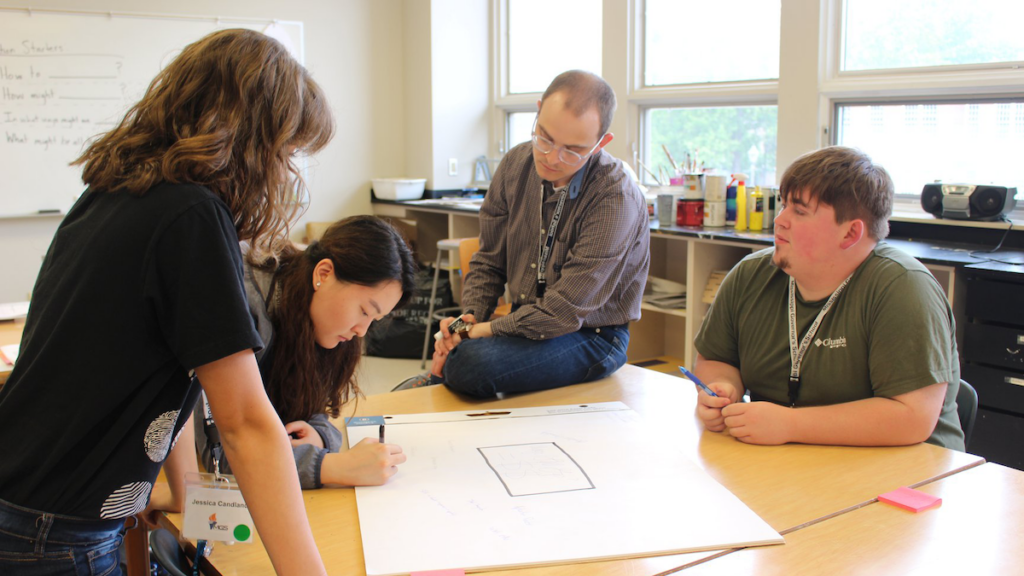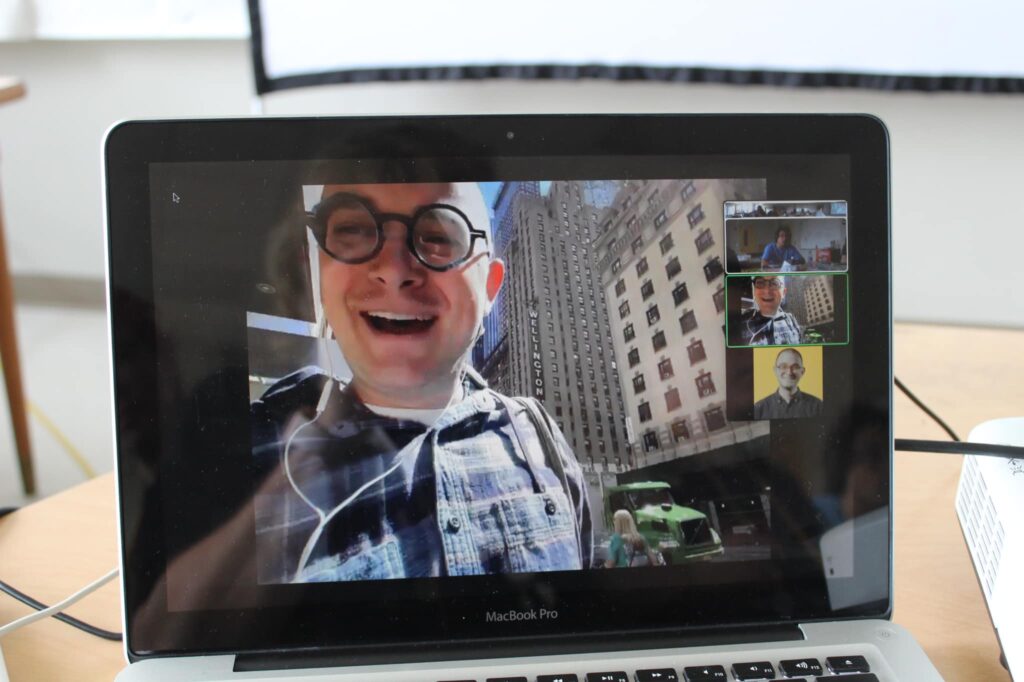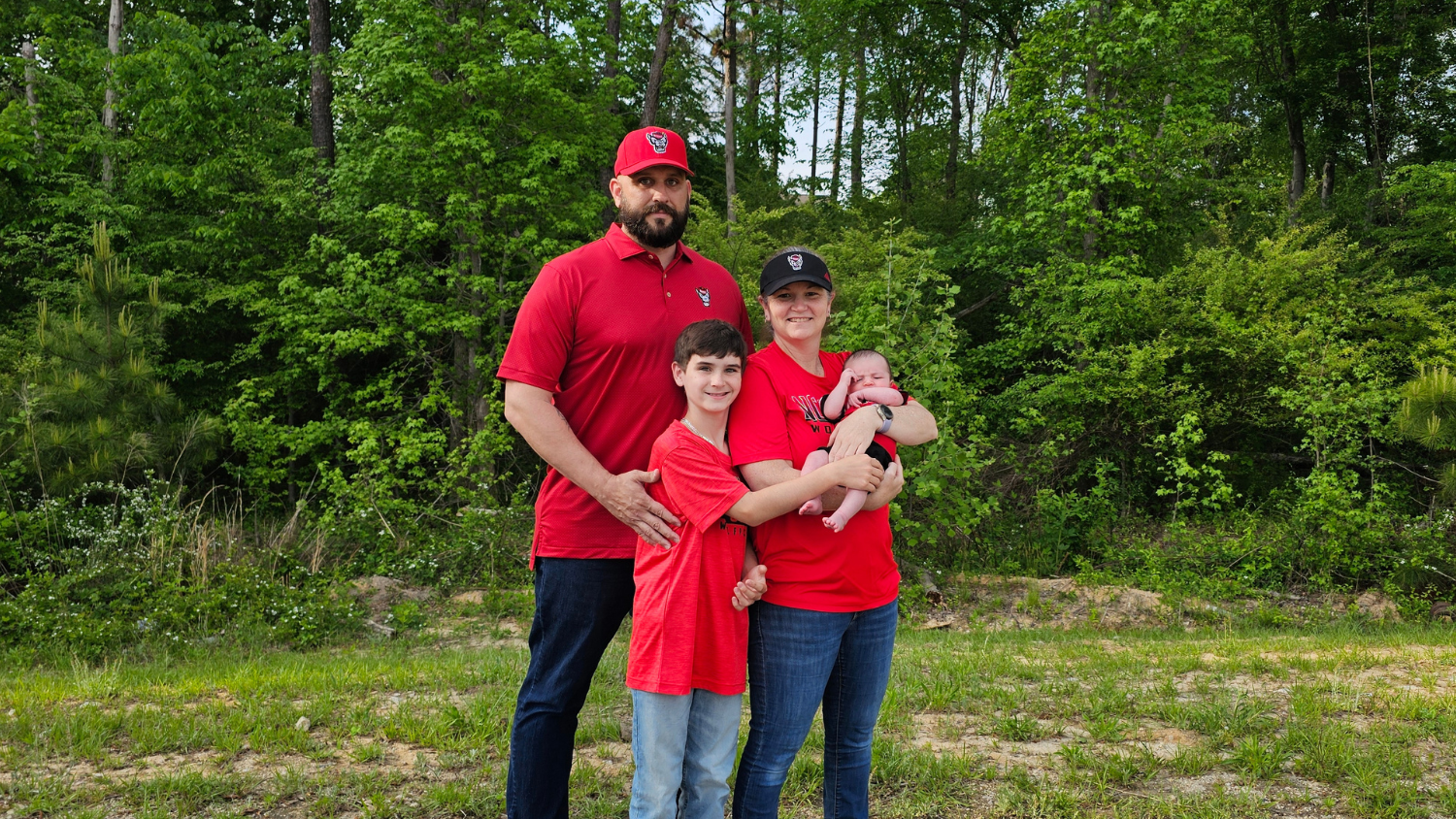NC State’s Doctor of Design (D.Des) program in the College of Design is unique — just like the student-practitioners it attracts.
A mere eight years old, NC State’s D.Des program is the only one in the country offering a blended (hybrid in-person and virtual) structure for established design professionals to conduct original research on the application of human-centered design and its impacts on society.
Students explore compelling topics such as therapeutic gardens for youth rehabilitation, video game design for restorative therapy and universal design for cross-species communication.
And knot tying.
New D.Des graduate Jonathan Williams has spent the last few years practicing the art of tying knots — and exploring how knot tying can be used to teach foundational principles of design to beginning design students.
“All children are learning to be designers when they learn to tie their shoes,” Williams explained. “Tying knots is a gateway to design.”
A Cutting-Edge Cohort
An established instructional designer and designer manager, Williams is currently a Clinical Assistant Professor of Human Centered Design in the Seidenberg School of Computer Science and Information Systems at Pace University in New York City. His resumé includes design work for Harvard Business School and New York University, along with various nonprofit and continuing education organizations.
Williams had always wanted to go back to school to complete his doctoral degree as a means of transitioning into a faculty role, but knew he would need to also be in practice as a designer to reap the benefits of the program and better understand his professional context.
The NC State D.Des program was a perfect fit.
“The D.Des program spoke to me on many levels,” Williams said. “The online distance education structure allowed me to balance my busy schedule and stay in New York while adding the credential I needed to move my career forward. Linking the practice of design to the research of design was a very exciting prospect.”

Williams also appreciated the program’s immersive week-long in-residence workshops each semester. Connecting in person with his peers and program faculty offered inspiration for exploring new areas of design scholarship and practice.
“Our students are a very different type of student: more like peers, some CEOs in the mix, people working on the cutting edge of the design industries,” said M. Elen Deming, director of the program and Professor of Landscape Architecture and Environmental Planning.
The D.Des faculty, Williams says, were incredibly supportive. “My committee chair Derek Ham played a pivotal role in helping me develop my scholarship,” he said. “He pushed me to become a better researcher and shared his own research generously. And I could not have completed this degree without the support of Elen [Deming], who kept opening doors for me to grow my skills.”
Derek Ham is department head and associate professor of Media, Arts, Design and Technology in the College of Design.
“My experience in the D.Des program has been fantastic,” Williams said. “I have learned so much from my peers, and my committee members unlocked invaluable opportunities for me to progress in my career and research.”
‘Knots Found Me’
“Learning design through designerly knotting,” the subject and title of Williams’ dissertation for the D.Des program, considers how object-based, tactile learning experiences with knots can be integrated within design classrooms and studios.
Williams’ D.Des research worked with two groups of beginning design students, high school and adult learners, to accomplish a series of knot tying exercises and activities. Through their creation of “designerly” knots, students uncovered foundational principles of design throughout the process.

“Jonathan’s dissertation demonstrates that object-based learning can be used as a way to unlock students’ creativity, confidence, and comprehension of larger, complex spatial thinking, such as mathematics and geometry, among other things,” Professor Deming explained.
Williams became interested in the idea of knots as a tactile education tool after reading an essay on knot tying as a means of self-expression. A mathematical statistics major as an undergraduate at Wake Forest University, Williams was immediately drawn to the computational appeal of knotting.
The essay, Williams explained, was beautiful — and prompted an “aha” moment during which “knots found me.” Knotting quickly became central to both his research and practice: “Design has a unique disciplinary angle that can add to the current literature on knot tying.”
And, yes, Jonathan has tied a lot of knots.
“As I have explored this topic over the last few years, I’ve become quite interested in physically making knots of all shapes, sizes, and patterns,” he said.
Williams is often asked what his favorite knots are. He loves to tie the Carrick Mat knot, for its symmetry and aesthetic appeal. “I like that you can play with the scale of it,” he explained. “I have one that is massive — you can walk on it.” He also likes Windy Chien’s doughnut knot, a favorite of his students for its simplicity and recognizable style.
“A beginning design classroom or studio is a special space to share with a student,” Williams said, and knotting provides an approachable catalyst for exploration of the design discipline.
“Knots are everywhere — from shoelaces to ships — and most of us have tied knots in our lives,” he continued. “Activating that prior knowledge of knot tying radically opens us up to new possibilities in design.”
The Work of Learning
Earning his doctorate was a five-year journey for Williams, during which he consistently worked full-time. Not content to sit on his laurels, however, he is already thinking about what will come next.
“I’m a big believer in lifelong learning,” he said. “The work of learning never stops.”
He advises other working professionals to explore professional opportunities by engaging in continuing education experiences at every career stage, whether online, in person or somewhere in between.
And if those opportunities include learning some cool knot-tying techniques and their application to design education, let him know.
Interested in advancing your career with a Doctor of Design degree from NC State Online? Visit the program page or online.ncsu.edu/programs for a full list of degree and certificate programs.
- Categories:



